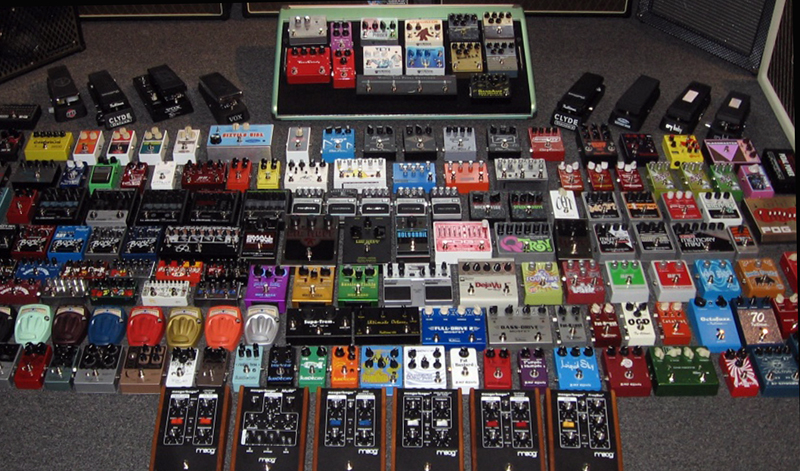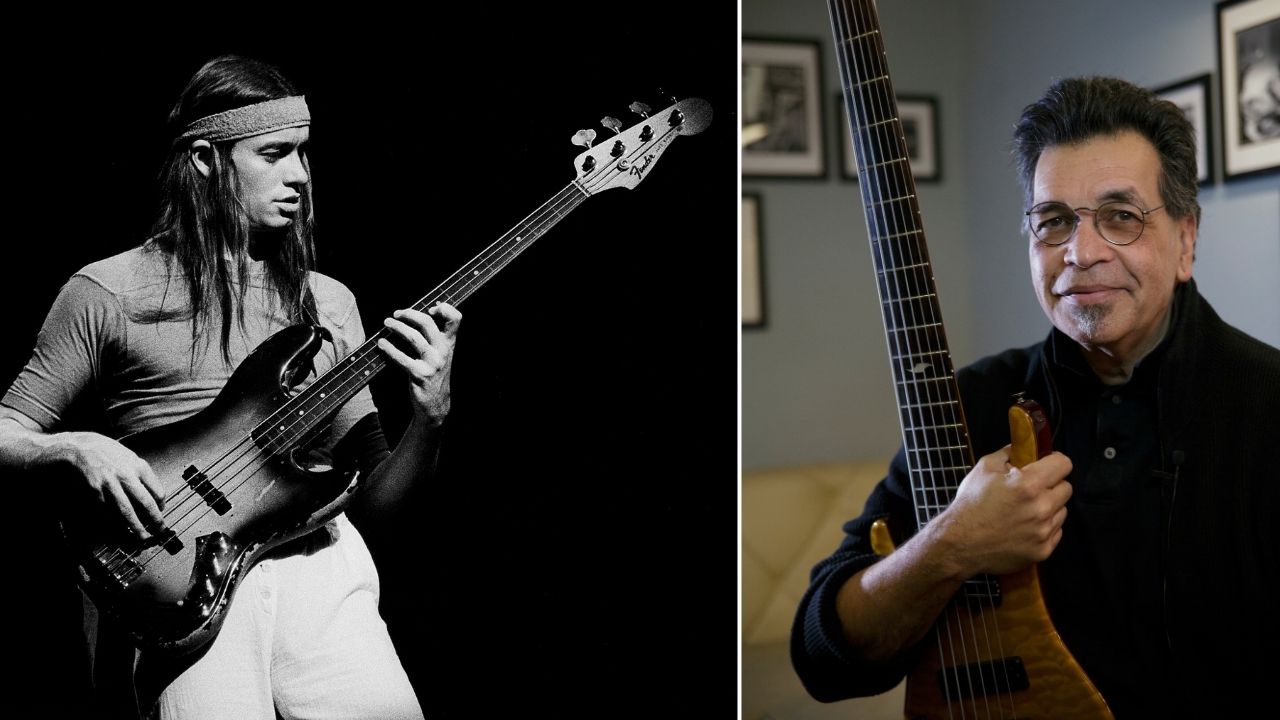From Compression to Wah, the Most Useful Effect Pedals for the Session Guitarist

This week, I'd like to say a few words about the most commonly used effects in the studio for guitarists.
I'd also like to preface this blog with a word of advice: When the idea comes to mind as to which effects should you buy first, or which brand is best, I will answer those immediately: You will need as many effects as you can carry, so buy them when you can.
As for which are the best? Easy answer, in two parts. The best ones are the ones that INSPIRE. They do something to your playing that you can feel.
The second part is technical. The effect should be as quiet as possible. It should add as little noise as possible to the signal. Listen to several brands of the same effect. Listen deep. Play them. Then, after you take your new toy home, LEARN to use it!
- Now I will start with the least-sexy of effects, but the most useful: Compression.
- Compression is used to shape the sound. It can alter the attack. It can add sustain. It can level a signal. And it can take years to truly learn. However, when you hear a clean guitar on a coffee commercial and wonder why it has such fullness and why each note is ringing clearly into each other, it isn't because it's a vintage Strat. It's because the attack on the compressor is set to allow the attack of each note to be heard and the release is set to allow for sustain.
Want to sound like David Gilmour? You will need one. For distortion, it is less noticeable, due to the natural compression of a distorted signal. However, it can add more sustain.
The next-most-useful effect will a distortion effect. By that I mean a fuzz box, distortion box, overdrive, tube saturator, pixellator or even a ring modulator! And I don't think I need to explain in detail what distortion is to Guitar World readers! However, each of the above will create a different distortion. And believe me when I say I use them all.
These are song- or layer-dependent, and the combination of any of these with a compressor, octave effect or EQ can make or break your very life as a session player! Listen to the track, then choose wisely.
All the latest guitar news, interviews, lessons, reviews, deals and more, direct to your inbox!
The next effect I choose to be most used is delay or echo. I can tell you that delay is often added at the board, locked to the tempo and rhythm of the track. But we all like a little juice on our solos, and a small amount of delay (with tap tempo option), can make your sound more complete. By that I mean, the engineer may have little or nothing to add to your tracks because you gave him or her a finished sound. They will love you for it!
Reverb is being mentioned here because of its similar spatial characteristics. However, it really is added most often at mix time, unless it is a very specific request. Like the need for a surf sound. There are still two main types of reverb: digital and spring. If you really want to be retro, use a spring. There really is nothing quite like it.
The next category is modulation effects. These include chorus, phase, flange, ring mod, vibe, rotary and tremolo. Basically, these are specialty items, but not rarely used. They can take a guitar and make it sound like an organ. Or a jet taking off. Or like a guitar played underwater. They can be used for an entire part or for just one chord in a song. They can be the ear candy the producer is seeking to bring out the second verse or the chorus or bridge. They can be bold or subtle. But rest assured, you need them and you need them all!
You will also need a wah-wah. A good wah, to me, should be able to stay in the position it is in to shape tone when necessary, because that really is all a wah is ... a tone control. Deeper, wider, but still a tone control. I like mine to have a vocal quality, but I also insist it does not alter the original tone. It just shifts it.
My next to last effect is an octave effect. I prefer the ones that can not only do octaves, but also be set to different pitches. Up a third, down a fourth, both at once, etc. An octave with a fuzz is truly a beautiful thing.
For my final effect, I will mention the volume pedal. I do not use one often. I own it, but I prefer to use my pinky for volume swells. It is a great effect, a necessary effect. However, I do it with my pinky; in other words, if that effect is required, I am not using a Les Paul. It's usually a Strat-type guitar where I have easy access to the volume control.
Now I know that sounds like a huge investment, but there are many pedals and racks that create multiple effects and do them well. I don't recommend buying 100 pedals and hooking them up, but hey, I have seen it done! (Frank Marino, anyone?)
Next week, we'll talk about creating a chain of effects and how to do it.
Till next time…
Ron Zabrocki
Ron Zabrocki on Ron Zabrocki: I’m a session guitarist from New York, now living in Connecticut. I started playing at age 6, sight reading right off the bat. That’s how I was taught, so I just believed everyone started that way! I could pretty much sight read anything within a few years, and that aided me in becoming a session guy later in life. I took lessons from anyone I could and was fortunate enough to have some wonderful instructors, including John Scofield, Joe Pass and Alan DeMausse. I’ve played many jingle sessions, and even now I not only play them but have written a few. I’ve “ghosted” for a few people that shall remain nameless, but they get the credit and I got the money! I’ve played sessions in every style, from pop to jazz.
